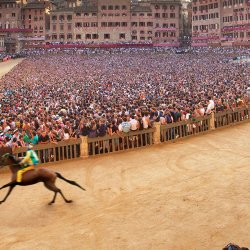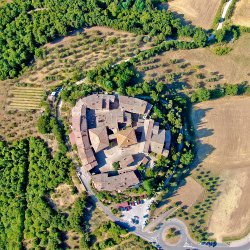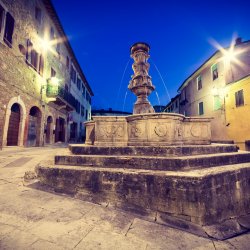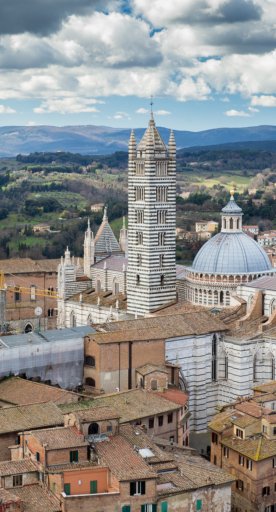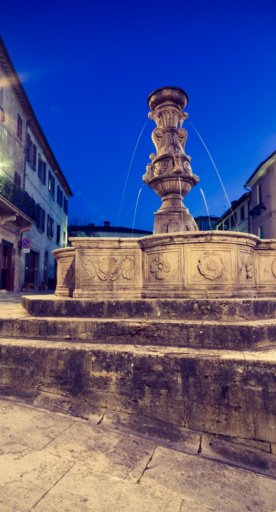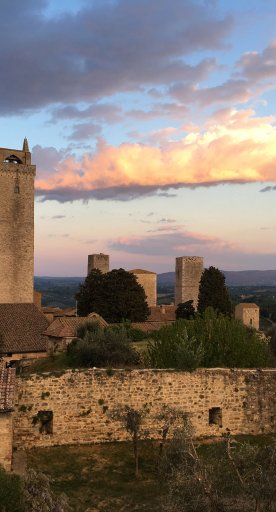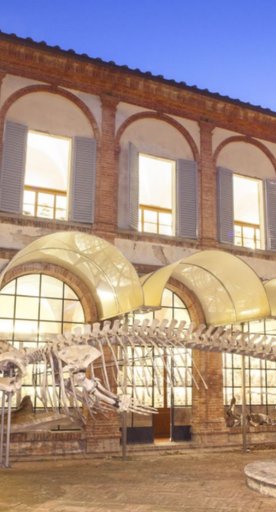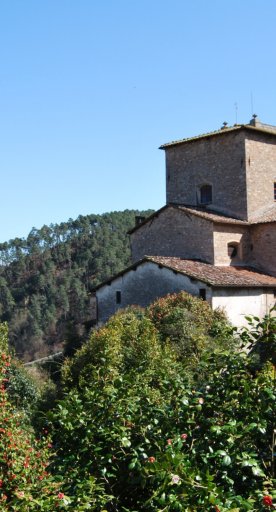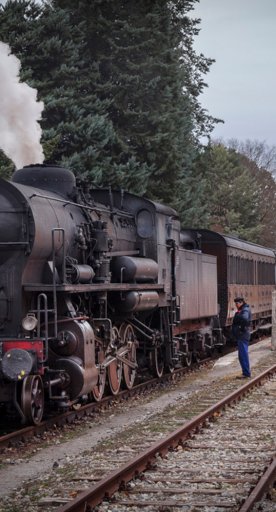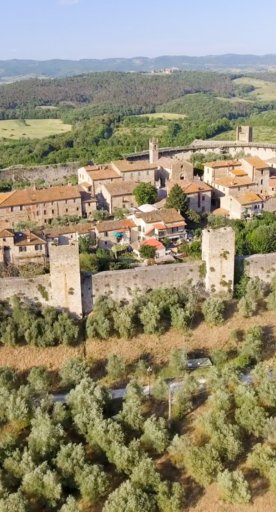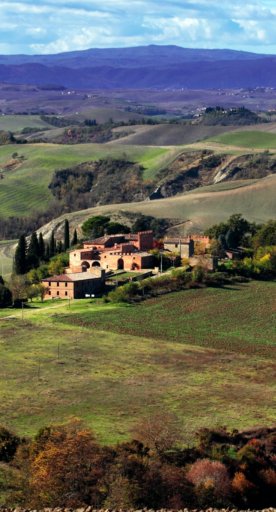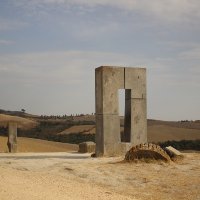

8 places in Tuscany for archaeology lovers
Ancient treasures from all around the region
Tuscany hosts a number of events designed to promote and protect its rich archaeological heritage. Throughout the year, specialists, archaeology enthusiasts and tourists can attend special openings, showcases, initiatives and major events focused on the region’s archeological wonders. All of Tuscany exudes the air of its ancient past, but 8 places take the crown for archeology lovers all around. Get ready to dive in!
-
1.Archeological area in Roselle
-
2.Volterra
-
3.Archeological area in Vetulonia
-
4.Fiesole
-
5.Cortona
-
6.Chiusi
-
7.Archaeological area in Massaciuccoli
-
8.The ancient city of Cosa
Archeological area in Roselle

Tuscany was known as Etruria in ancient times, and Roselle (Rusellae), located 8 km north of Grosseto, was the region’s most flourishing town. This Etruscan center became a Roman colony at the end of the 3rd century B.C.E. and was later abandoned when its population moved to Grosseto in the Middle Ages. What’s left today? You’ll find an Etruscan city wall built between the 7th and 6th century B.C.E. vaunting a perimeter over 3 km long and about 7 m high. You’ll also find remains of the Roman city, including the forum, the cardus maximus, the imperial basilica and several aristocratic villas, not to mention a small amphitheater and thermal baths perched on a hill.
Volterra

Volterra is one of Tuscany’s oldest towns, a former Etruscan settlement whose archeological finds date to the 9th century B.C.E. The ancient Etruscans named the city Velathri or Felathri, while its Roman name is documented as Volaterrae. The original Etruscan walls are still visible today, as they are well preserved and surround the city center. In Volterra, archaeology lovers will find some of Tuscany’s greatest Roman treasures, such as the majestic amphitheater just below the city. Don’t miss the Guarnacci Museum, once a private collection (from 1761) that features a large number of sarcophagus-shaped funerary urns often decorated with bas-reliefs and images of the deceased person. Noteworthy finds also include the tomb of a warrior prince from Poggio alle Croci, an Etruscan bronze bust called the Testa Lorenzini, the Ombra della Sera marble statue and over 700 urns, including those of brides and grooms.
Archeological area in Vetulonia

Vetulonia is one of Italy’s most important Etruscan cities; the site was first discovered in the 19th century during archaeological digs conducted by Isidoro Falchi. The settlement emerged and flourished thanks to the mining of the area’s natural resources, a center that gained power in the 7th century B.C.E. In the following century, a fortified wall was built around the city to protect it from foreign attacks. The city’s decline dates to the second half of the 1st century A.D. Today you’ll find the Tomb of Belvedere, a crypt located in a panoramic spot (from the 7th century B.C.E.), the Tomb of the Little Devil, which measures about 80 m in size, and the Tomb of the Golden Fubula. You’ll also find the remains of several Etrusco-Roman homes and the town’s fortified wall.
Fiesole

Fiesole is located just a few kilometers from Florence; the views alone make this hilltop town worth visiting! Fiesole is home to a number of spectacular treasures found during archeological digs. The Etruscans probably founded the city between the 9th and 8th century B.C.E., though it later became a typical Roman town and slowly lost its prestige, overshadowed by Florentine power. You’ll find a number of historical and archaeological sites in the town center, such as the central piazza Mino da Fiesole built on a Roman forum, the main cathedral, the Church of Santa Maria Primerana, the seminary, the Bishop’s Place and the Town Hall. A short walk from the main square you’ll find a spacious archaeological site vaunting remains of a Roman theatre, an Etrusco-Roman temple, Roman baths and the city’s Archaeological Museum, not to mention the ancient wall still visible in certain spots. For more information, check out more things do and see in Fiesole.
Cortona

Cortona is one of the oldest hilltop towns in the Valdichiana area in southern Tuscany. It was founded as an Umbrian city, later conquered and enlarged by the Etruscans before becoming a Roman colony. The city is surrounded by stone walls dating to Etruscan and Roman times. The now separate piazza della Repubblica and piazza Signorelli were joined until the 13th century, a location that once housed the ancient forum. The squares are framed by a number of beautiful public and private medieval buildings (including the striking town hall), but among the town’s gems to visit, archeology lovers shouldn’t miss MAEC, the Etruscan Academy Museum of the City of Cortona. This exhibition space, spanning over 6500 sq. feet, is home to an array of extraordinary masterpieces produced by the Etruscan civilization, such as the Tabula Cortonensis, one of the longest Etruscan texts in the world, and finds from the archaeological area surrounding the town.
Chiusi

Chiusi is located on a hill in the southern Valdichiana area. Founded by the Etruscans, the area reached its maximum splendor under King Porsenna between the 7th and 5th century B.C.E. In 351 B.C.E., Chiusi was occupied by the Romans and became an important military station. Archaeology lovers shouldn’t miss the town’s Museo Archaeologico Nazionale vaunting a number of bucchero pottery artifacts, not to mention the Tomba della Scimmia, a tomb with fascinating wall paintings that can be visited by booking an appointment. For more information, check out the museum website or read more about Chiusi, the Etruscan village in southern Tuscany.
Archaeological area in Massaciuccoli

Massaciuccoli is located in the municipality of Massarosa in the Versilia area. The Etruscans first settled in this zone, but Romans later chose Massaciuccoli as the construction site for prestigious buildings (thanks to the area’s beautiful, natural landscape). Today you’ll find remains of two major complexes from the Imperial Roman era (a luxurious villa and a station) and a series of artifacts that suggest the presence of a smaller settlement and its corresponding burial area. Among the most noteworthy items displayed, don’t miss a mosaic floor dating to Roman times. The museum ticket includes the ancient Roman site, the thermal springs and the artifacts on display. Check out more about Roman Massaciuccoli in Versilia.
The ancient city of Cosa

In 273 B.C.E., the Romans founded the colony of Cosa in Ansedonia (near Orbetello) on a rocky promontory 114 m above the sea, a strategic position between Tuscany and Lazio. The city was created as a fortress surrounded by a fortified wall (1500 m long). Along the wall’s perimeter, eighteen square towers and a round tower further reinforced the more vulnerable sections, including three main gates. Built between two hills, a forum was added between the two areas for the city’s political activity. The highest area was dedicated to the acropolis, a place for worshipping the gods; the Temple of Jupiter, built during the city’s foundation and destroyed about a century later, vaunts a considerable selection of terracotta ornaments.

